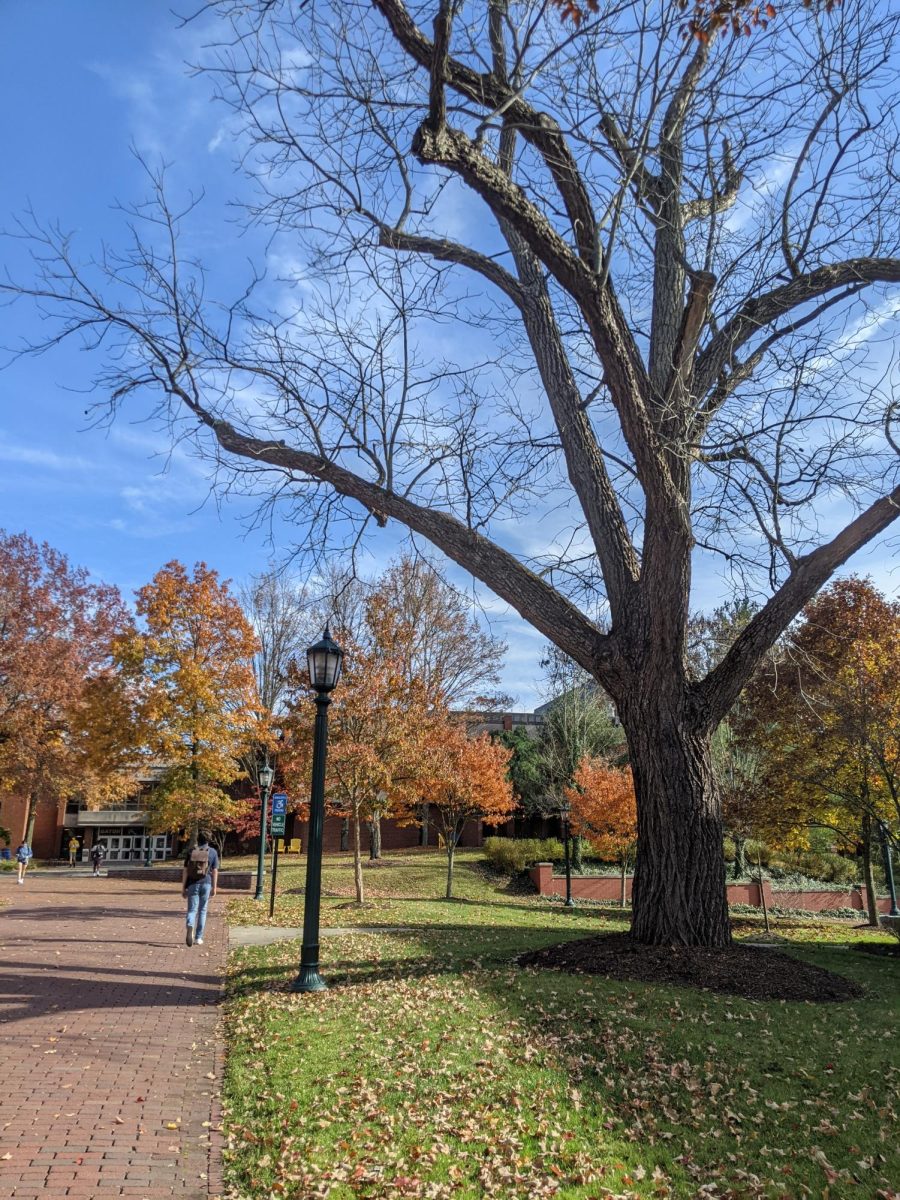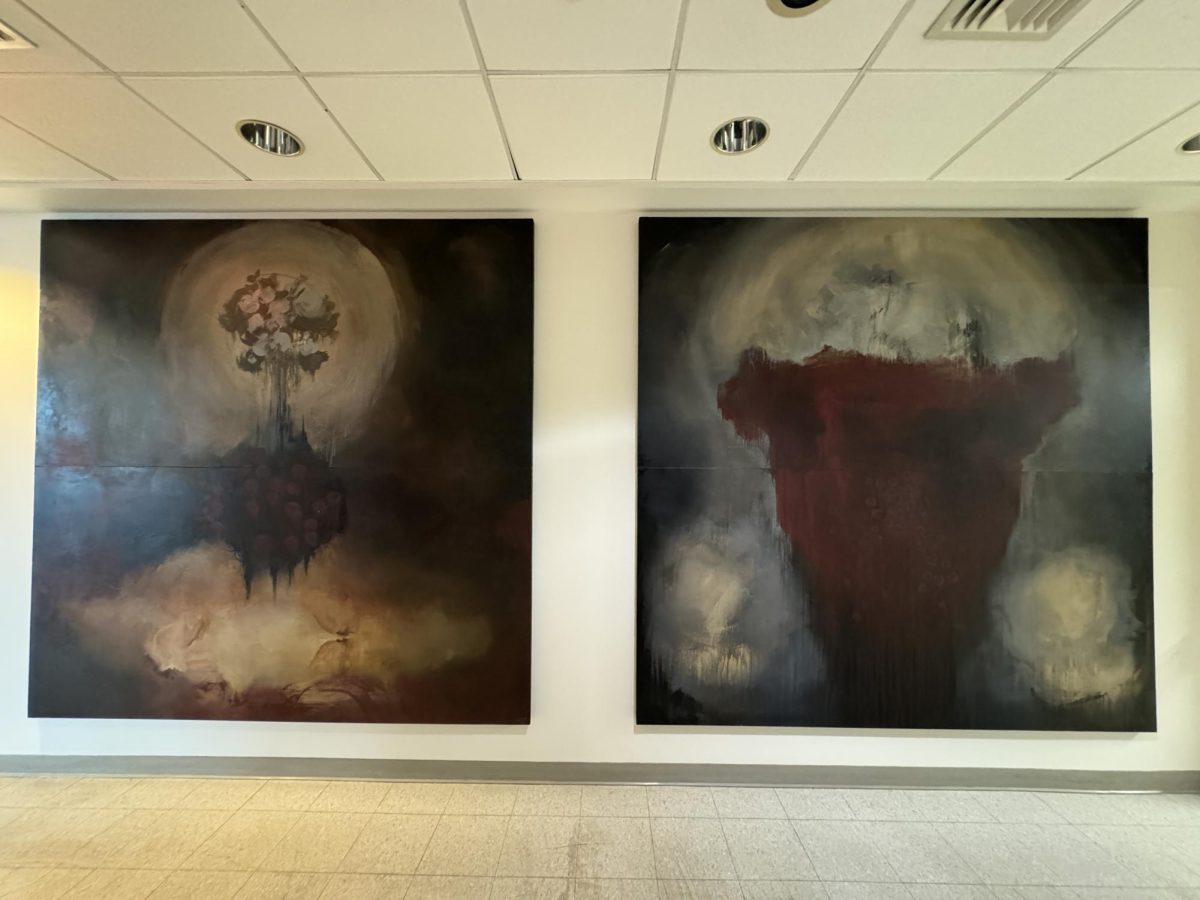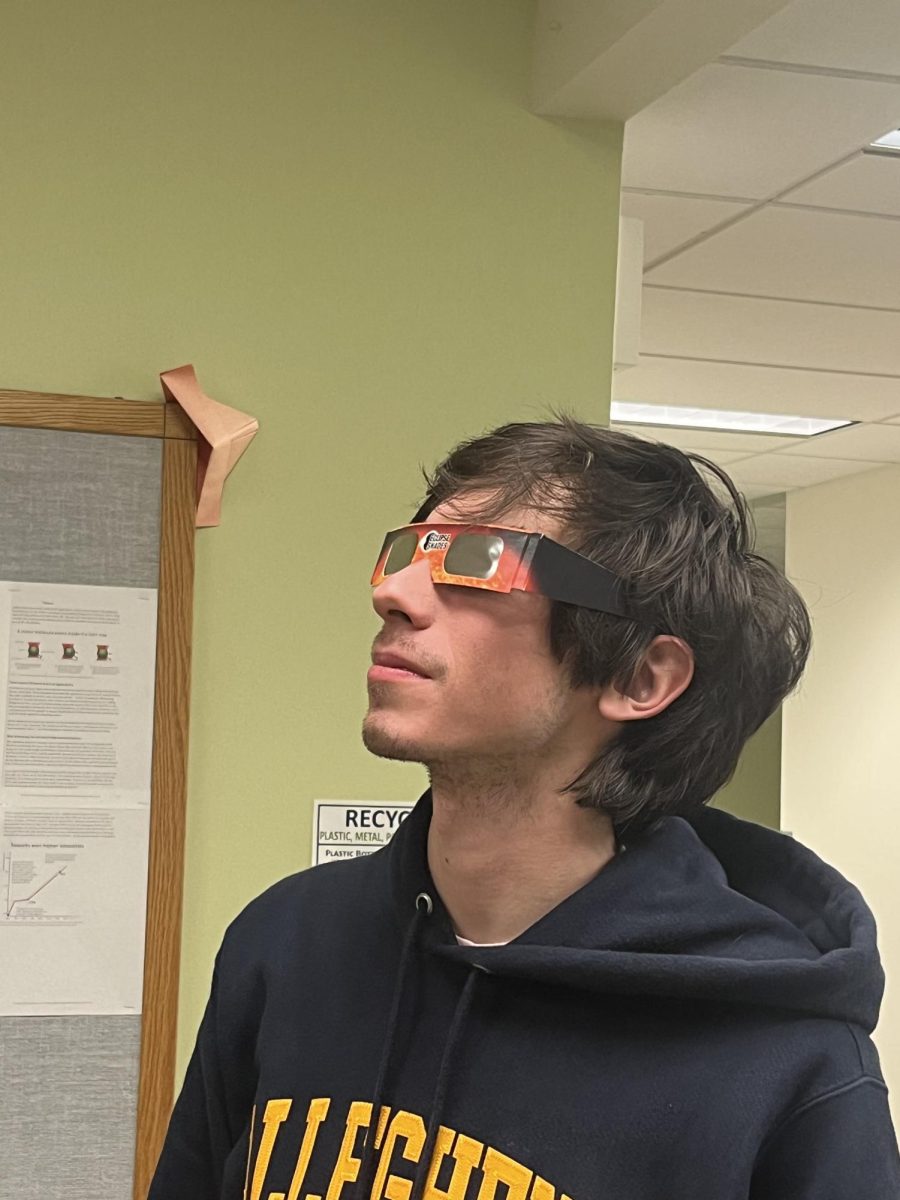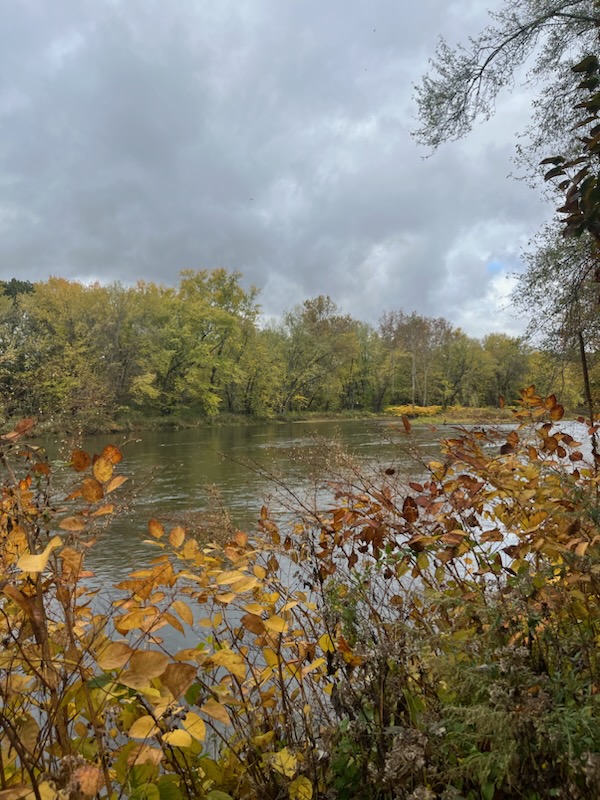Hundreds of students cross North Main Street and head toward the Henderson Campus Center to enjoy a meal, gather with friends or attend class every single day. This mindless activity usually occurs without interruption. However, recently students have encountered a new obstacle they must dodge to safely make it to the campus center: falling walnuts.
The source of the walnuts is a century-old black walnut tree growing at the corner of the Tippie Alumni Center, beside the path to the Campus Center. Black walnut trees, or Juglans nigra, is a large deciduous tree species native to the Eastern United States that produces baseball-sized fruit containing walnuts. The trees produce their fruit during the summer months, which means any unpicked fruit drops from the tree in the fall.
“A few weeks ago, when the walnuts were falling from the tree, I saw people tripping over the walnuts that were already on the ground,” said Ashleigh Dolan, ’24.
The environmental benefits the tree provides are numerous, like stabilizing soil, absorbing and storing carbon dioxide, cycling nutrients, and providing habitat for birds and tree-dwelling mammals, according to Environmental Science and Sustainability Professor Rich Bowden. Black walnut is also prized for its lumber, Bowden added, and for the walnuts, which provide nutrient- and energy-dense food for wildlife like deer, bears, squirrels and chipmunks.
“The squirrels often accelerate the falling process by clipping the nuts from the branches,” Bowden said. “Then they retrieve the nuts on the ground and either eat them directly or store them in food caches. The trees produce nuts annually, in varying quantities. This might be a high production year.”
The tree is maintained by Physical Plant, who conducts regular monitoring and upkeep as needed.
“The tree was trimmed back about 10 years ago to remove the branches hanging over the walk,” said Jim Mulligan of Physical Plant. “We are looking at trimming it back again.”
However, Bowden cautioned that trimming may cause adverse health effects for the tree.
“Trimming is not likely to alleviate the situation,” Bowden said. “Continual removal of branches accelerates the risk of insect, fungal or bacterial attack of the tree. Perhaps a sign suggesting to walkers that they avoid that sidewalk in the fall would be sufficient or play a game of dodge the walnuts.”
Despite their differing views, both Bowden and Mulligan felt confident that all opinions would be heard and considered before making any decisions for the tree.
“When making decisions about the plants on campus we consider all impacts it may have,” Mulligan said. “We work closely with other groups on campus to make sure we are making informed decisions.”
The tree maintenance decision would likely slot into ongoing cross-campus sustainability efforts to make the college as environmentally friendly as possible.
“(Environmental Science and Sustainability) Professor Eric Pallant and Physical Plant Director Joe Michael lead the visioning to develop a resilient campus forest,” Bowden said. “(Environmental Science and Sustainability Assistant) Professor Jesse Swann-Quinn is exploring the kinds of trees to grow on campus and has worked with his students to get a grant that will prepare educational signs on campus.”
Other efforts in the environmental science and sustainability department have been made to monitor and protect the campus forest.
“Students in an ENVSC 210 (research methods) course developed an assessment of the trees on campus, including recommendations for the types of trees that should be planted,” Bowden said. “In addition, the forest ecology course last year developed recommendations for specific tree planting or replacement. Both reports were given to Physical Plant and the Office of Sustainability.”
In their natural forest habitats, the black walnut fruit falls to the ground where the husk breaks down exposing the walnut inside. Throughout the winter season, walnuts are a source of food for rodents, raccoons and black bears. On a college campus, falling walnuts can be a hazard.
Despite students tripping over walnuts, Dolan believes the good outweighs the bad.
“I think the risk the tree poses to pedestrians is very minimal and the environmental benefits are much greater,” Dolan said. “I think the tree should stay there.”
Categories:
Students dodge falling fruits from tree near Tippie
Story continues below advertisement
0
More to Discover








